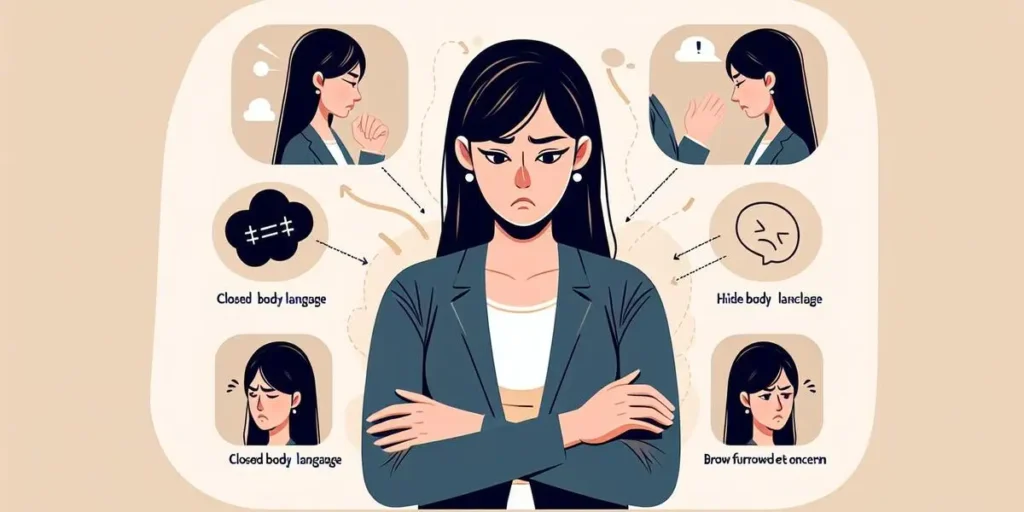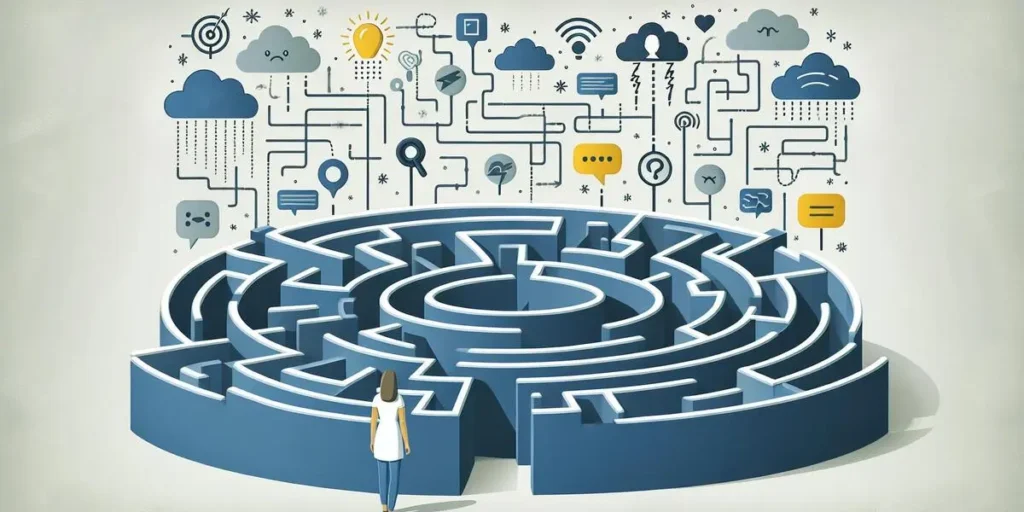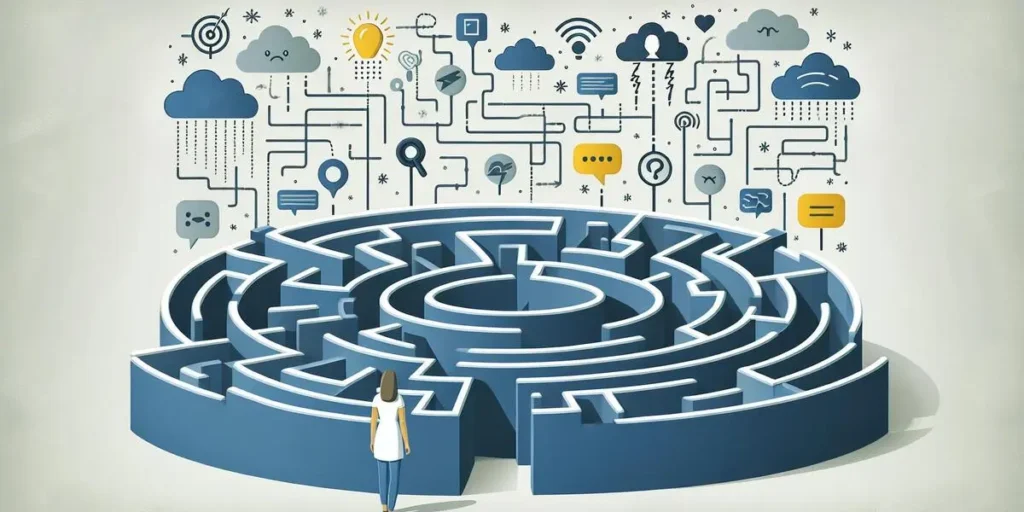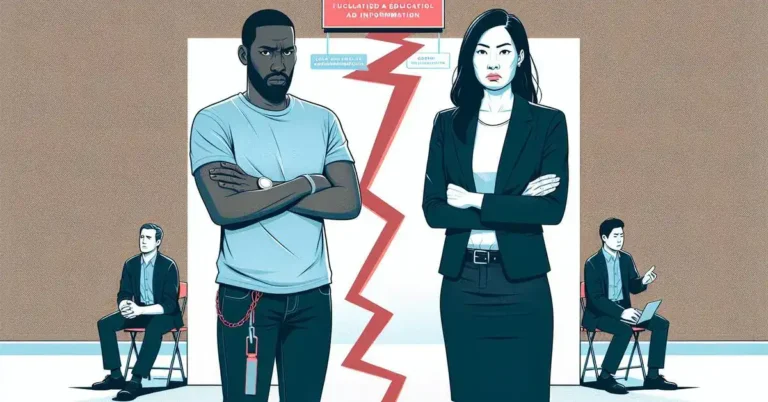Overcoming Anxiety Barriers to Communication
Anxiety barriers in communication refer to the difficulties and hesitations that people experience while communicating due to fear, nervousness or worry. They can manifest as stuttering, inability to express thoughts adequately, avoiding eye contact, forgetting words, etc. These obstacles interfere with effective understanding and collaboration and can lead to misunderstandings and conflict.
These barriers are important to understand because they affect interpersonal interactions significantly. By recognizing these issues, we can employ strategies such as active listening, patience, empathy and non judgemental responses to better communicate with individuals who have anxiety barriers. This not only improves the effectiveness of the conversation but also builds trust and respect in relationships.
The Impact of Anxiety on Communication
When we consider the complexity of human interaction, it’s clear that anxiety can significantly hinder our ability to communicate effectively. I’ve seen firsthand how this invisible barrier can disrupt both personal and professional relationships, often without others realizing the root cause. Below, I’ll dive into the physical and cognitive symptoms of anxiety that contribute to communication challenges.

Physical Symptoms of Anxiety
Anxiety isn’t just a mental or emotional condition; it manifests physically in ways that can directly obstruct communication. From my experience and observations, a few key symptoms stand out:
Speech Patterns
Anxiety can cause a rapid heart rate and shallow breathing, which directly affects how we speak. I’ve often found my voice trembling or speed increasing when I’m anxious, making it hard for others to follow my points.
Body Language
Our non-verbal cues say as much, if not more, than our words. Anxiety can lead to closed-off body language, such as crossed arms or avoidance of eye contact, signaling disengagement or disinterest even when that’s far from the truth.
Physical Restlessness
This can include fidgeting, pacing, or having difficulty staying still. Such behaviors can distract both the speaker and the listener, detracting from the message being conveyed.
These physical symptoms are not just challenging for the person experiencing them; they’re also cues that can mislead or confuse the listener, further complicating communication.
Cognitive Symptoms of Anxiety
Beyond the physical, anxiety profoundly impacts our cognitive functions, particularly those essential for effective communication. Here are a few cognitive symptoms I’ve noticed:
Memory Problems
Anxiety has a way of clouding one’s memory. I’ve found myself forgetting key points mid-conversation or struggling to remember what someone just told me, making it difficult to engage in meaningful dialogue.
Lack of Concentration
When anxious, it’s tough to stay focused. My mind tends to jump from one worry to another, leaving little room to fully process or respond to what’s being communicated.
Overthinking
Anxiety often leads me to overanalyze how I want to express myself, to the point where I might opt not to speak at all. The fear of saying something wrong or being misunderstood can be paralyzing.
Both the physical and cognitive symptoms of anxiety create a substantial barrier to effective communication. Recognizing these signs in ourselves and others can be the first step toward improving our interactions and ensuring our messages are conveyed and received as intended.
Barriers to Communication Caused by Anxiety

Anxiety is a formidable opponent in the realm of communication. It weaves intricate barriers that not only affect how we perceive ourselves but also how we interact with others in various settings. Below, I delve into some of the critical barriers to communication directly tied to anxiety.
Fear of Judgment
One of the most paralyzing effects of anxiety is the fear of being judged. This fear isn’t just about worrying what people will think about us; it’s more about the dread of their evaluation leading to rejection or humiliation. When I’m caught in the grips of this fear, it’s as if every word I plan to say is scrutinized not just by my audience but also, more critically, by me.
This intense self-monitoring discourages open, spontaneous communication, leading to a skewed and sometimes completely hindered exchange of ideas.
Difficulty Expressing Thoughts
Anxiety has a peculiar way of muddling thoughts. It’s like trying to navigate through a fog; you know your destination, but the path is anything but clear. This difficulty isn’t limited to complex subjects but can extend to everyday conversations. For me, it often feels as if there’s a disconnect between my brain and my mouth. Words lose their way, sentences fall apart, and the message I intended to convey either gets lost or is delivered in a way that doesn’t accurately represent my thoughts or feelings.
Overthinking and Second Guessing
The realm of overthinking is where anxiety truly reigns supreme. It’s not just about considering various outcomes; it’s the endless cycle of evaluating and reevaluating every possible scenario, word choice, and potential reaction. For those of us battling anxiety, overthinking doesn’t simply stop at planning. It extends into second guessing every decision made during communication.
This constant interrogation of our own actions can lead to hesitation, deleting and rewriting messages multiple times, and in severe cases, avoiding communication altogether.
Social Anxiety
Social anxiety is a specific aspect of anxiety that intensely focuses on social interactions, often magnifying the already mentioned barriers. It embodies the fear of judgment, difficulty in expressing thoughts, and overthinking, but within the context of social settings. For someone like me, who experiences social anxiety, the mere thought of attending gatherings or speaking in group settings can trigger a flurry of anxiety-induced responses. This form of anxiety can turn casual conversations into arduous tasks and professional engagements into sources of profound distress.
In tackling these barriers, recognizing their presence is just the beginning. Strategies such as mindfulness, preparation, and gentle self-reminders of past successes can serve as valuable tools in dismantling the walls anxiety builds around communication.
Strategies to Overcome Anxiety Barriers to Communication

Overcoming the barriers to communication caused by anxiety isn’t always easy, but it’s definitely possible with the right strategies. In this section, I’ll dive into several effective methods to help you navigate through the challenges anxiety presents in communication.
Seek Professional Help
One of the most impactful steps I’ve taken to address anxiety barriers in communication is seeking professional help. Therapists, counselors, and communication coaches are trained to help you understand the root causes of your anxiety. They provide personalized strategies to manage and overcome these feelings.
Professional guidance can be incredibly beneficial in learning how to control anxiety symptoms that interfere with effective communication. Whether it’s cognitive-behavioral therapy (CBT) techniques to challenge negative thought patterns or exposure therapy to gradually face and adapt to anxiety-inducing communication situations, the support from a professional can make a significant difference.
Practicing Relaxation Techniques
Another strategy I’ve found helpful is incorporating relaxation techniques into my routine. Before entering a potentially stressful communication scenario, I practice techniques such as deep breathing, progressive muscle relaxation, or even meditation. These methods help in calming the mind and body, reducing the physical and mental symptoms of anxiety.
By lowering stress levels, I’ve noticed an improvement in my ability to focus on the conversation at hand without being overwhelmed by anxiety. Practicing these techniques regularly not only helps in the moment but also contributes to long-term anxiety management.
Building Self-Confidence
Building self-confidence has been a game-changer in overcoming my anxiety barriers to communication. This involves acknowledging my successes, no matter how small they might seem, and learning from interactions that didn’t go as planned rather than viewing them as failures. I make it a point to set realistic communication goals and celebrate when I achieve them.
Additionally, positive self-talk and visualization techniques before engaging in conversations have been incredibly beneficial. These methods help reinforce my belief in my communication abilities, reducing anxiety and making interactions more manageable.
By incorporating these strategies into my life, I’ve noticed a considerable improvement in my ability to communicate effectively despite anxiety. Each method contributes to a more confident and composed approach to interactions, ensuring that anxiety doesn’t stand in the way of meaningful communication.
Conclusion
I’ve walked you through the labyrinth of anxiety as a communication barrier, shedding light on its multifaceted nature and the paths to navigate through it. It’s clear that while anxiety can significantly impede our ability to communicate, it’s not an insurmountable obstacle. By embracing mindfulness, preparation, and a positive affirmation of our past victories, we can chip away at the walls anxiety builds around us.
Moreover, seeking professional guidance and practicing relaxation techniques can further bolster our arsenal against anxiety’s grip on our communicative prowess. Remember, building self-confidence is a journey, not a sprint. With patience and persistence, we’ll find ourselves engaging more freely and effectively, turning our moments of anxiety into stepping stones towards becoming more adept communicators. Let’s embark on this transformative journey together, embracing each challenge as an opportunity for growth.






